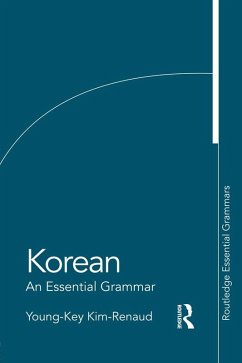Presenting a fresh and accessible description of the language, this engaging grammar uses clear, jargon-free explanations to give a concise and convenient guide to the basic grammatical structure of Standard Korean.
Dieser Download kann aus rechtlichen Gründen nur mit Rechnungsadresse in A, B, BG, CY, CZ, D, DK, EW, E, FIN, F, GR, HR, H, IRL, I, LT, L, LR, M, NL, PL, P, R, S, SLO, SK ausgeliefert werden.
"I think the book serves considerably more than a pedagogical function, and will be a valued descriptive and data resource for anyone who is curious about how this language is organized. It also will be a source of inspiration for graduate students in linguistics, who increasingly are pursuing projects on the structural aspects of Korean... I think this is a fine, careful contribution to the scholarship on Korean, from both linguistic and pedagogical perspectives, and I expect it to rank among the most influential, most accessible English-language expositions on Korean." - Gregory K. Iverson, University of Maryland; The Journal of Asian Studies; Volume 69/3, August 2010
"I think the book serves considerably more than a pedagogical function, and will be a valued descriptive and data resource for anyone who is curious about how this language is organized. It also will be a source of inspiration for graduate students in linguistics, who increasingly are pursuing projects on the structural aspects of Korean... I think this is a fine, careful contribution to the scholarship on Korean, from both linguistic and pedagogical perspectives, and I expect it to rank among the most influential, most accessible English-language expositions on Korean." - Gregory K. Iverson, University of Maryland; The Journal of Asian Studies; Volume 69/3, August 2010

